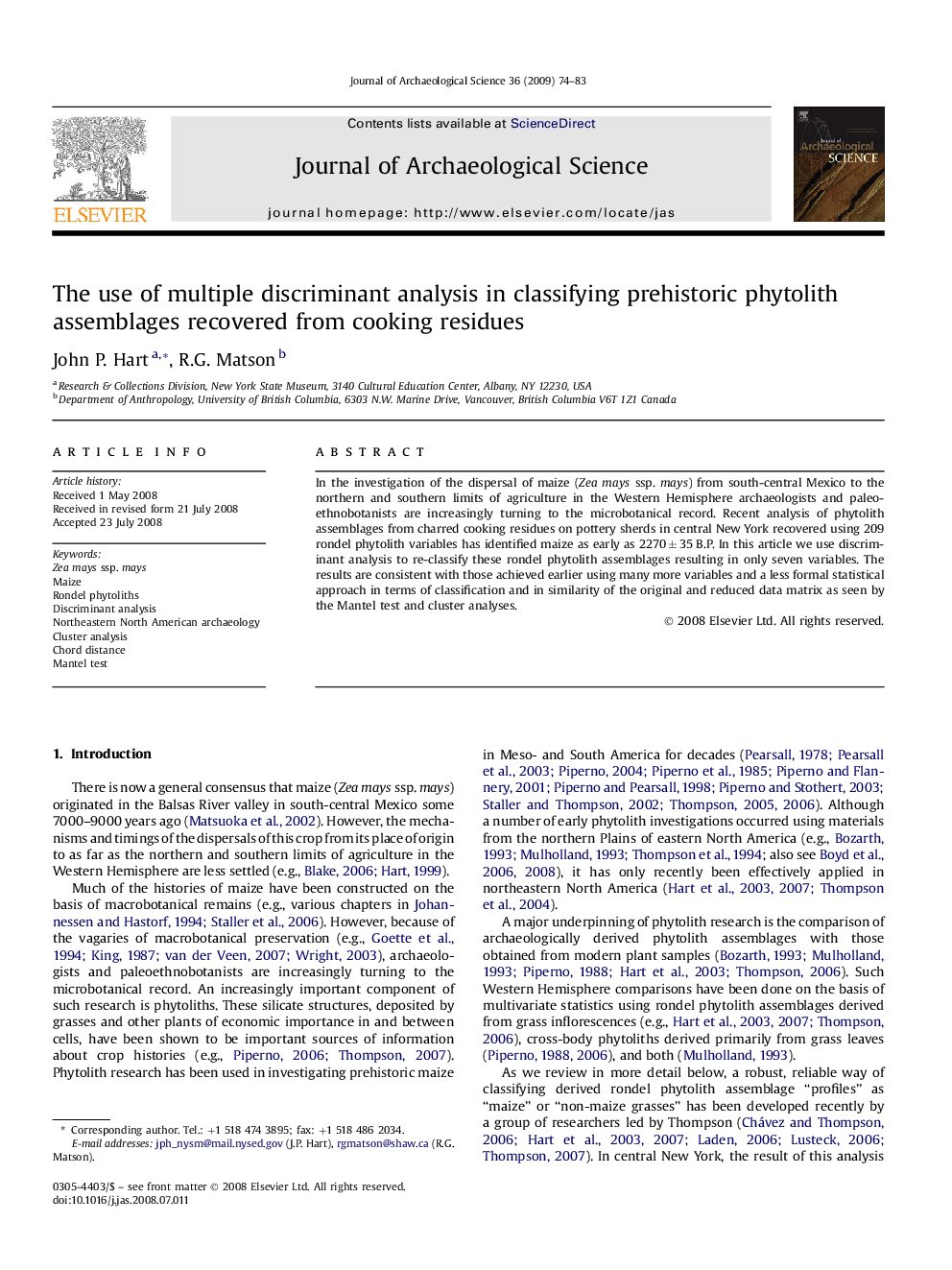| Article ID | Journal | Published Year | Pages | File Type |
|---|---|---|---|---|
| 1037121 | Journal of Archaeological Science | 2009 | 10 Pages |
In the investigation of the dispersal of maize (Zea mays ssp. mays) from south-central Mexico to the northern and southern limits of agriculture in the Western Hemisphere archaeologists and paleoethnobotanists are increasingly turning to the microbotanical record. Recent analysis of phytolith assemblages from charred cooking residues on pottery sherds in central New York recovered using 209 rondel phytolith variables has identified maize as early as 2270 ± 35 B.P. In this article we use discriminant analysis to re-classify these rondel phytolith assemblages resulting in only seven variables. The results are consistent with those achieved earlier using many more variables and a less formal statistical approach in terms of classification and in similarity of the original and reduced data matrix as seen by the Mantel test and cluster analyses.
